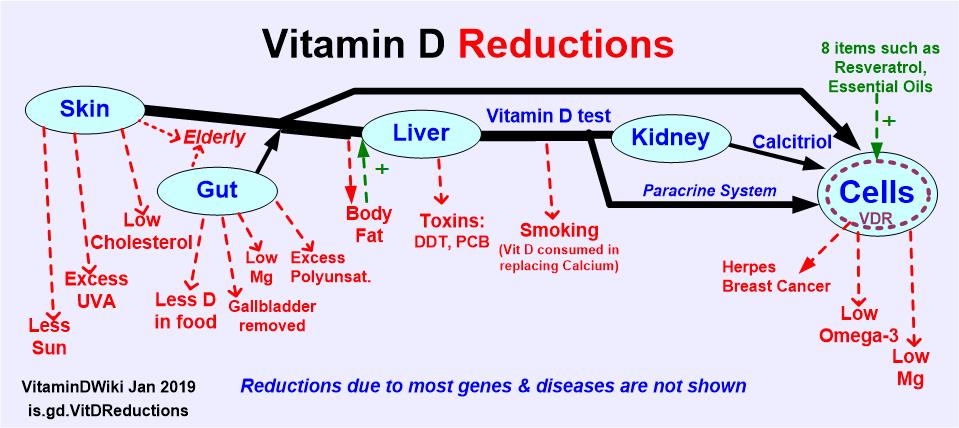Vitamin D bioavailability: State of the art
Crit Rev Food Sci Nutr. 2013 Oct 2. [Epub ahead of print]
Borel P 1, Caillaud D, Cano NJ.
1a INSERM, UMR1062, Nutrition, Obesity and Risk of Thrombosis , F-13385 , Marseille , France.
There has been renewed interest in vitamin D since numerous recent studies have suggested that besides its well-established roles in bone metabolism and immunity, vitamin D status is inversely associated with the incidence of several diseases, e.g. cancers, cardio-vascular diseases and neurodegenerative diseases. Surprisingly, there is very little data on factors that affect absorption of this fat-soluble vitamin, although it is acknowledged that dietary vitamin D could help to fight against the sub-deficient vitamin D status that is common in several populations. This review describes the state of the art concerning the fate of vitamin D in the human upper gastrointestinal tract and on the factors assumed to affect its absorption efficiency. The main conclusions are:
(i) ergocalciferol (vitamin D2), the form mostly used in supplements and fortified foods, is apparently absorbed with similar efficiency to cholecalciferol (vitamin D3, the main dietary form),
(ii) 25-hydroxyvitamin D (25OHD), the metabolite produced in the liver, and which can be found in foods, is better absorbed than the non-hydroxy vitamin D forms cholecalciferol and ergocalciferol,
(iii) the amount of fat with which vitamin D is ingested does not seem to significantly modify the bioavailability of vitamin D3,
(iv) the food matrix has apparently little effect on vitamin D bioavailability,
(v) sucrose polyesters (Olestra) and tetrahydrolipstatin (orlistat) probably diminish vitamin D absorption, and
(vi) there is apparently no effect of ageing on vitamin D absorption efficiency.
We also find that there is insufficient, or even no data on the following factors suspected of affecting vitamin D:
(i) effect of type and amount of dietary fibre,
(ii) effect of vitamin D status, and
(iii) effect of genetic variation in proteins involved in its intestinal absorption.
In conclusion, further studies are needed to improve our knowledge of factors affecting vitamin D absorption efficiency. Clinical studies with labelled vitamin D, e.g. deuterated or 13C, are needed to accurately and definitively assess the effect of various factors on its bioavailability.
PMID: 24915331
📄 Download the PDF from Vitamin D Life obtained from Researchgate

